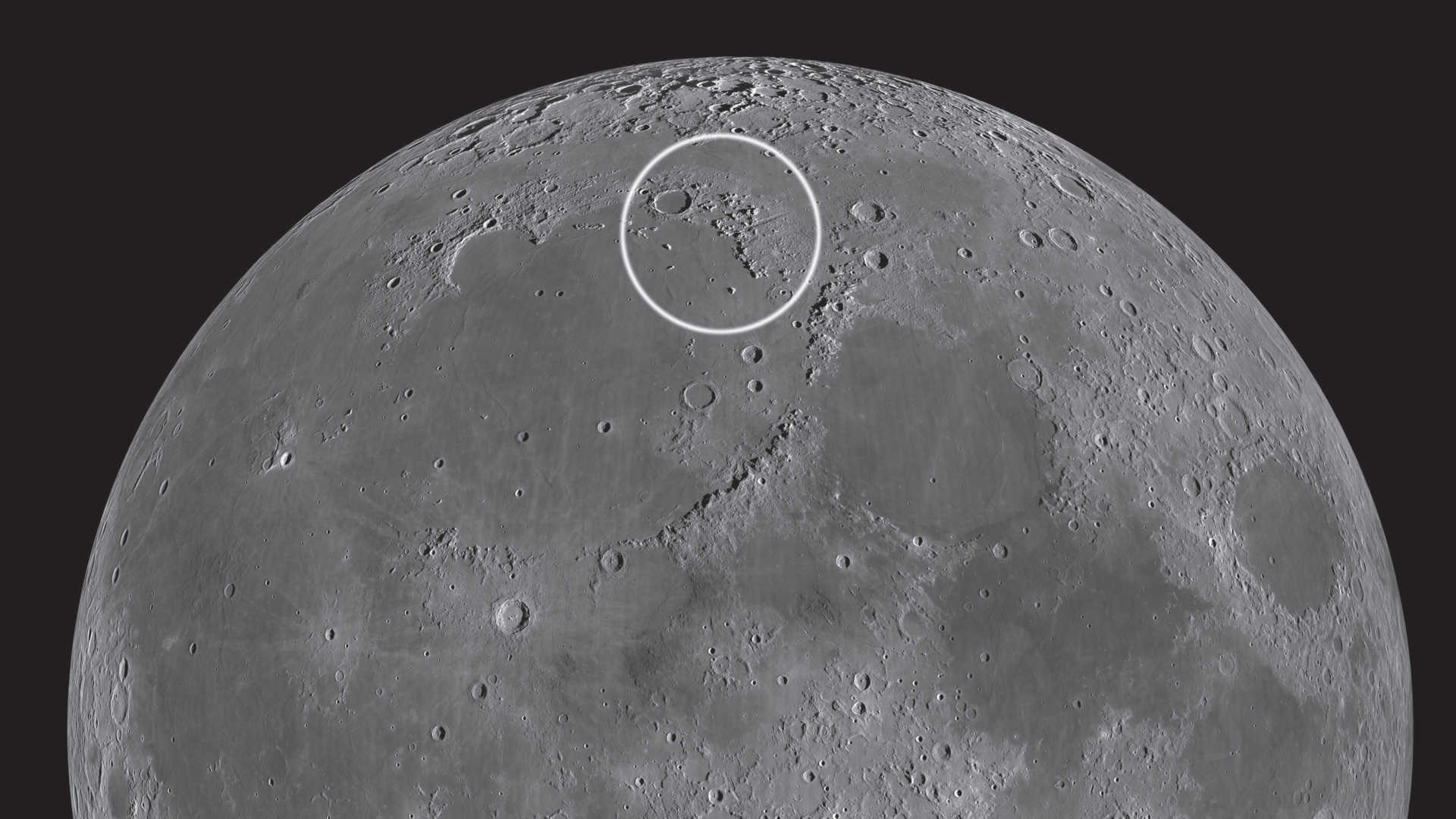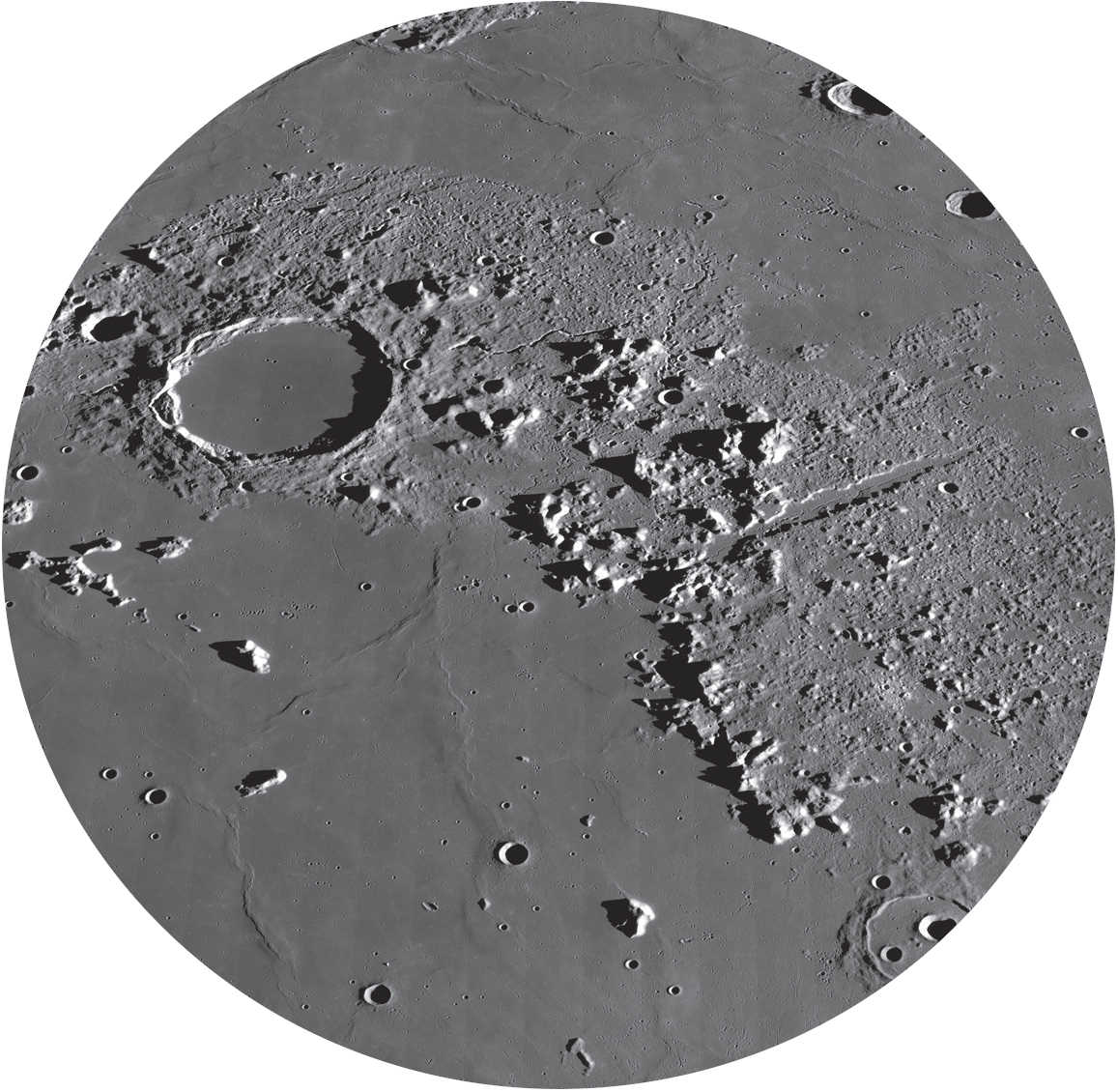On a tour of Alpen mountains and valleys
When Mare Imbrium was formed nearly four billion years ago, a mighty outer wall was created.
 The Montes Alpes are located on the north-eastern edge of Mare Imbrium. NASA/GSFC/Arizona State University
The Montes Alpes are located on the north-eastern edge of Mare Imbrium. NASA/GSFC/Arizona State UniversityWhen Mare Imbrium (Sea of Showers) was formed nearly four billion years ago, a mighty outer wall was created, the remnants of which are today named after terrestrial mountain ranges. In the south there are Montes Carpatus (Carpathian), in the east Montes Apenninus (Apennine), with Montes Caucasus (Caucasus) and Montes Alpes (Alps) in the north-east.
Higher and higher
 High mountain peaks and extensive hilly areas characterise the image of the Montes Alpes. NASA/GSFC/Arizona State University
High mountain peaks and extensive hilly areas characterise the image of the Montes Alpes. NASA/GSFC/Arizona State UniversityThe Montes Alpes run for 281 km to the north-east of Mare Imbrium. The first of the mountains begin close to the Cassini crater and the entire mountain range stretches up to impact crater Plato to the north of the lunar mare. The imposing Vallis Alpes (Alpine Valley) is located in the middle of the Montes Alpes, running in a south-west/north-east direction.
While north of the valley the Alpes range consists of a large number of intersecting peaks, the terrain south of Vallis Alps is made up of of low mountains and hills. Most striking are the seemingly precipitous Promontorium Agassiz (Cape Agassiz) to the north-west of Cassini and the highest Alpes mountain Mont Blanc which towers above the 2,500 m tall peaks of the mountain range by about another 1,000 m.
And diving deep down
Vallis Alpes is visually one of the most impressive formations on the Moon. Here, at a length of 190 km and a width of 10–20 km, the lunar crust has sunk along two fault lines. The valley was probably created at the same time as the impact that created Mare Imbrium. The surface is covered with dark lava rocks, whereas at the morning terminator the 1,000 m tall slopes at the western edge are brightly lit. Immediately after a few kilometres from the Mare Imbrium, the narrow gorge opens into a wide oval area, which was called the Great Amphitheatre in historical lunar literature.
In detail
 Detailed view of Vallis Alpes. The rille in Vallis Alpes is just 550 m wide and very difficult to observe. NASA/GSFC/Arizona State University
Detailed view of Vallis Alpes. The rille in Vallis Alpes is just 550 m wide and very difficult to observe. NASA/GSFC/Arizona State UniversityA real challenge is to observe the 550 m wide rille that runs along the bottom of Vallis Alpes. This rille, running through the middle of the valley, is probably a former lava channel whose ceiling has collapsed. If the seeing is excellent and allows a magnification of at least 200 times, you have some chance of a sighting by using a telescope with an aperture from around 150 mm.
Best visibility 8 or 21 days after New Moon
Author: Lambert Spix / Licence: Oculum-Verlag GmbH
